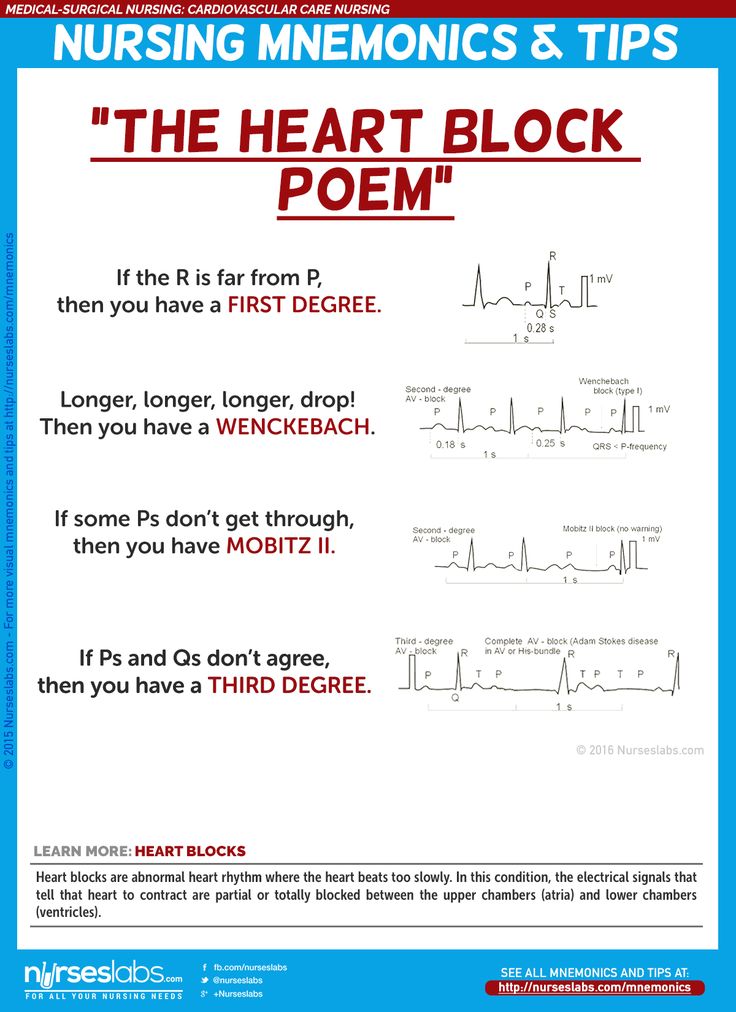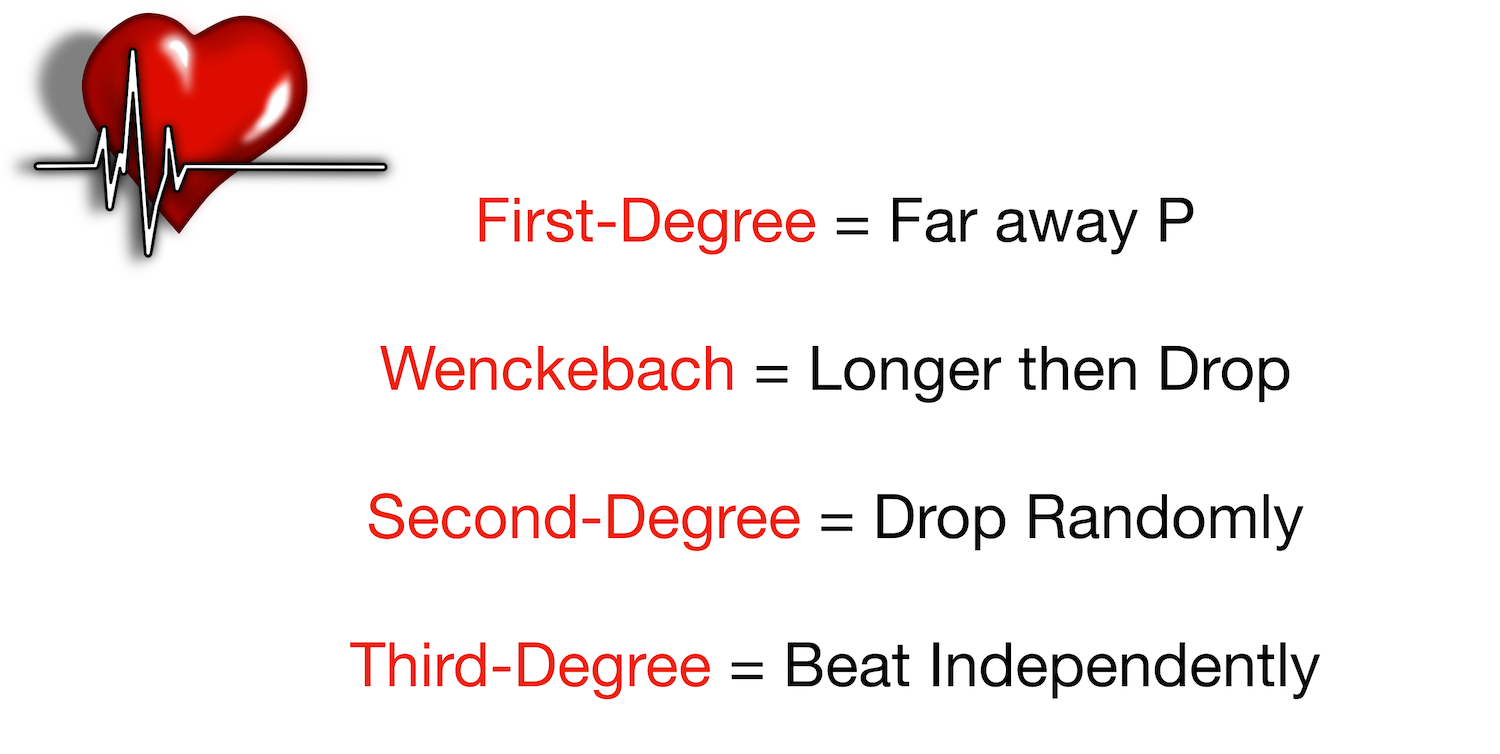The Heart Block Poem is a creative mnemonic used to remember the different types of atrioventricular (AV) heart blocks and their key characteristics as seen on an electrocardiogram (ECG). Here’s the poem for you:
If the R is far from P, then you have a FIRST-DEGREE.
Longer, longer, longer, drop! Then you have a WENCKEBACH.
If some P’s don’t get through, then you have MOBITZ II.
If P’s and Q’s don’t agree, then you have a THIRD DEGREE.
- Meaning of the Heart Block Poem
- What is a Heart Block?
- What Causes Heart Blocks?
- People Also Ask
- What is the Heart Block Poem?
- How does the Heart Block Poem help?
- What are the types of heart blocks mentioned in the poem?
- Can anyone use the Heart Block Poem?
- Where can I find the Heart Block Poem?
- Can I create my own version of the Heart Block Poem?
Meaning of the Heart Block Poem
Each line of the poem corresponds to a type of heart block:

- First-degree heart block: A slight delay in the electrical signals passing through the AV node, but all signals eventually reach the ventricles.
- Second-degree heart block (Mobitz Type I/Wenckebach): Electrical signals progressively slow down until one signal fails to reach the ventricles, causing a skipped beat.
- Second-degree heart block (Mobitz Type II): Some electrical signals are unable to reach the ventricles without warning.
- Third-degree heart block: No electrical signals can pass from the atria to the ventricles, leading to the ventricles beating independently of the atria.
What is a Heart Block?
A heart block is a condition where the electrical signals that control the heartbeat are partially or completely blocked. This can cause the heart to beat more slowly or irregularly, which may affect how well the heart can pump blood. Here’s a brief overview:
- First-degree heart block: The electrical signals are delayed but still reach the ventricles, usually not causing significant symptoms.
- Second-degree heart block: The signals are intermittently blocked. There are two types:
- Type I (Mobitz Type I or Wenckebach): The signals get progressively slower until a beat is skipped.
- Type II (Mobitz Type II): Some signals do not reach the ventricles at all, leading to a more irregular and slower heartbeat.
- Third-degree heart block: Also known as complete heart block, no signals reach the ventricles, which may cause a separate pacemaker in the ventricles to take over, leading to a very slow and sometimes unreliable heartbeat.
Symptoms can vary depending on the type and severity of the block and may include dizziness, fainting, fatigue, and shortness of breath. Severe cases, especially third-degree heart block, can lead to sudden cardiac arrest if untreated.
What Causes Heart Blocks?
Heart blocks can be caused by a variety of factors, including:
- Age-related Changes: Scarring or fibrosis of the heart’s electrical system due to aging can lead to heart blocks.
- Heart Damage: Conditions such as heart attacks, muscle disorders, or complications from Lyme disease can disrupt the heart’s rhythm.
- Autoimmune Conditions: Diseases that cause the body’s immune system to attack its own tissues can affect the heart’s electrical system.
- Medications: Certain medications, especially beta blockers and calcium channel blockers, can contribute to heart blocks.
- Congenital Factors: Some people are born with defects that affect the heart’s electrical pathways.
People Also Ask
What is the Heart Block Poem?
It’s a poem that helps remember the types of heart blocks, which are problems with the electrical signals in the heart.
How does the Heart Block Poem help?
The poem uses simple lines to describe each type of heart block, making it easier to recall during medical studies or practice.
What are the types of heart blocks mentioned in the poem?
The poem covers first-degree, second-degree (Type I and II), and third-degree heart blocks, each with different signal issues.
Can anyone use the Heart Block Poem?
Yes, it’s mainly for medical students and professionals, but anyone interested in learning about heart blocks can use it.
Where can I find the Heart Block Poem?
It’s available in medical textbooks, educational websites, and sometimes shared among students online.
Can I create my own version of the Heart Block Poem?
Yes, if it helps you remember the information better, you can make your own mnemonic poem.

I am a passionate technology and business enthusiast, constantly exploring the intersection where innovation meets entrepreneurship. With a keen eye for emerging trends and a deep understanding of market dynamics, I provide insightful analysis and commentary on the latest advancements shaping the tech industry.
